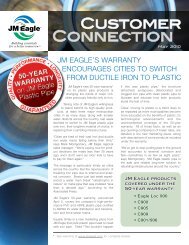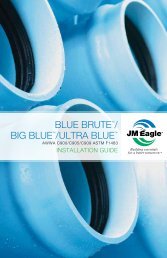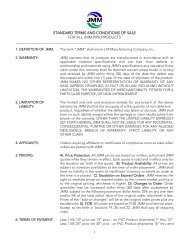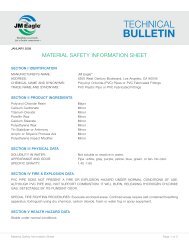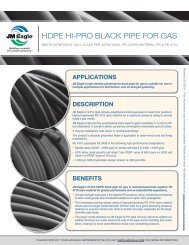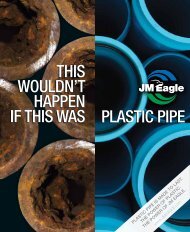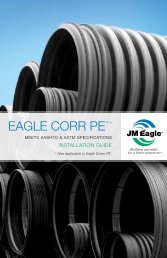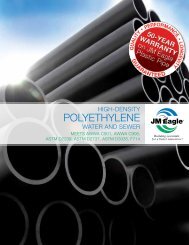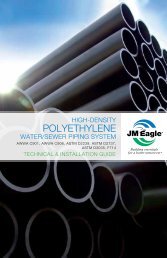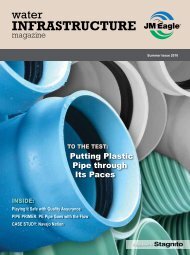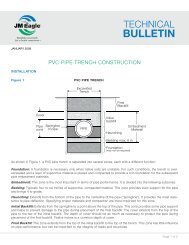I.P.S. Pressure/Irrigation (P.I.P) Installation Guide - JM Eagle
I.P.S. Pressure/Irrigation (P.I.P) Installation Guide - JM Eagle
I.P.S. Pressure/Irrigation (P.I.P) Installation Guide - JM Eagle
Create successful ePaper yourself
Turn your PDF publications into a flip-book with our unique Google optimized e-Paper software.
3.5 Cutting<br />
A square cut is essential to ensure proper assembly and/or beveling. PVC<br />
pipe can easily be cut with a fine-toothed hacksaw, handsaw or a power-type<br />
saw with a steel blade or abrasive disc. (Do not use standard pipe cutters.<br />
The cutting wheel may crush or damage the pipe.) It is recommended that<br />
the pipe be marked around its entire circumference prior to cutting to ensure<br />
a square cut. Do not burn the pipe while cutting.<br />
Figure 11<br />
NOTICE: <strong>JM</strong> <strong>Eagle</strong> recommends using proper personal protective eqipment,<br />
such as gloves and safety glasses, when cutting PVC pipe.<br />
3.6 Beveling<br />
Use a factory-finished beveled end as a guide to determine the angle and<br />
length of taper. The end may be beveled using a plastic pipe-beveling tool<br />
as shown, which will cut the correct taper automatically or such tools as<br />
the Stanley “Surform” No. 399, a coarse file or rasp. A portable sander or<br />
abrasive disc may also be used to bevel the pipe end. Remove all burrs and<br />
raised edges prior to assembly to avoid cutting the gasket.<br />
3.7 Locating Reference Mark<br />
With a pencil, crayon or permanent marker, locate the reference mark at the<br />
proper distance from the beveled end. The reference mark may be located<br />
accurately by using a factory-marked end of the same pipe as a guide.<br />
IRRIGATION & I.P.S. PRESSURE INSTALLATION GUIDE<br />
23



